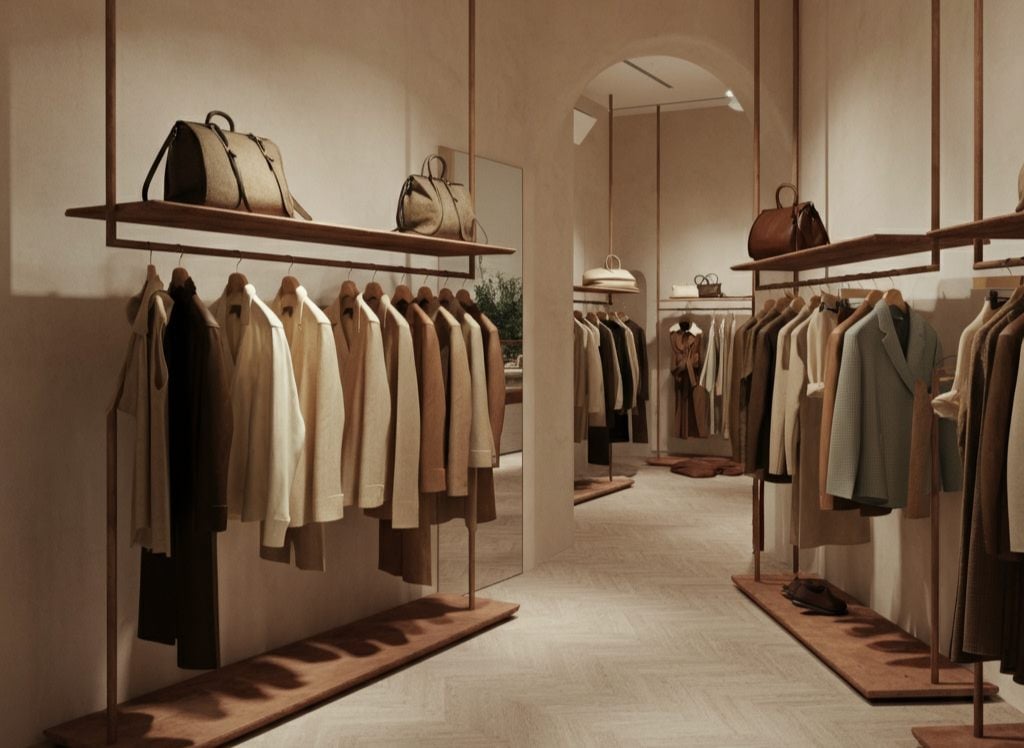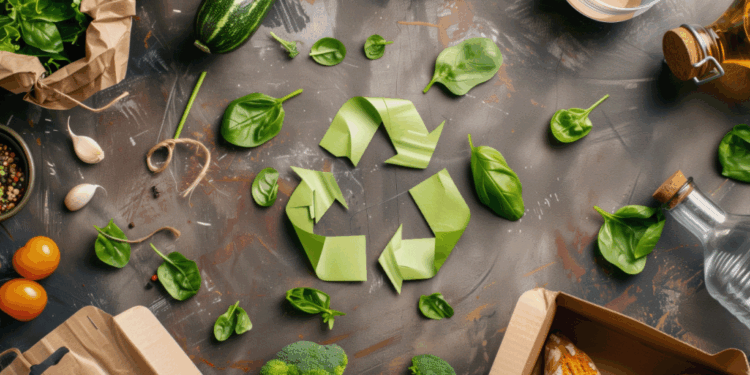The luxury fashion industry, long synonymous with exclusivity, impeccable craftsmanship, and timeless elegance, is undergoing a profound and necessary transformation. For decades, its allure was built upon a foundation of newness seasonal collections, pristine materials, and an unspoken promise of untouched perfection. However, a powerful new movement is challenging this very paradigm, not by rejecting luxury’s core values, but by redefining them for a conscious modern era. This movement is led by a wave of innovative brands and visionary designers who are not looking forward to the next trend, but backward, into the archives of fashion’s past, to create its future. They are the pioneers of upcycled luxury, and they are decisively dominating the conversation by merging unparalleled desirability with undeniable responsibility.
Upcycled luxury, distinct from simple recycling or second-hand selling, involves the process of transforming discarded materials, deadstock fabrics, or vintage garments into new products of higher quality and value than the original. It is an act of creative alchemy that requires immense skill, artistic vision, and a deep respect for the history of the materials being used. This article delves deep into the world of upcycled luxury, exploring its driving forces, its key players, the challenges it faces, and why it represents the most compelling and dominant direction for the future of high fashion.
A. The Powerful Forces Fueling the Upcycled Luxury Revolution
The ascent of upcycled luxury is not a random trend; it is a direct and intelligent response to a confluence of cultural, environmental, and economic shifts.
A.1. The Mounting Environmental Imperative
The conventional fashion industry is one of the world’s largest polluters. It is responsible for an estimated 10% of global carbon emissions, massive water consumption, and vast amounts of textile waste flooding landfills each year. The luxury sector, with its global supply chains and resource-intensive processes, is a significant contributor. A new generation of consumers is acutely aware of this footprint. They are increasingly aligning their purchases with their values, seeking out brands that demonstrate a genuine commitment to planetary health. Upcycled luxury directly addresses this by:
-
Waste Reduction: Diverting pre-existing materials from landfills and incinerators.
-
Resource Conservation: Drastically reducing the need for new raw materials (e.g., water, cotton, petroleum for synthetics) and the energy required to process them.
-
Lowering Carbon Footprint: Minimizing the emissions associated with agriculture, manufacturing, and long-distance transportation of virgin materials.
A.2. The Rise of the Conscious Consumer
Today’s luxury shopper, particularly Millennials and Gen Z, is more informed and discerning than ever before. They demand transparency, authenticity, and a compelling story behind their purchases. Ownership is no longer just about displaying wealth; it’s about displaying values. An upcycled piece from a luxury brand is a tangible symbol of environmental awareness and cultural intelligence. It allows the wearer to make a bold style statement while simultaneously making an ethical one, a powerful combination that traditional luxury struggles to match.
A.3. The Insatiable Craving for Uniqueness and Storytelling
In a world saturated with mass-produced goods and instant gratification, true rarity has become the ultimate luxury. An upcycled garment is inherently one-of-a-kind or part of an extremely limited series. Each piece carries a unique narrativethe history of its original components, the creative genius behind its transformation, and the statement it makes about the future. This layers the object with a depth of story and emotional resonance that a brand-new item simply cannot replicate. Consumers are investing in these stories as much as they are in the product itself.
A.4. Economic Prudence and Value Retention
For brands, upcycling presents a savvy economic model. Sourcing deadstock fabrics or vintage pieces can be more cost-effective than producing new textiles from scratch. Furthermore, these unique items often command premium prices due to their exclusivity and artisanal value. For the consumer, upcycled luxury goods are perceived as intelligent investments. Their inherent rarity and narrative value can make them more resilient to depreciation and even appreciate over time, much like a rare vintage find.
B. Trailblazing Brands Dominating the Upcycled Luxury Landscape
A diverse array of players, from established heritage houses to agile niche designers, are leading the charge and proving that sustainability and luxury are not mutually exclusive but are, in fact, synergistic.
B.1. The Heritage Powerhouses Embracing Change
Major luxury brands are leveraging their vast archives and resources to embark on ambitious upcycling projects.
-
Marine Serre: The French designer has made radical eclecticism and upcycling the cornerstone of her brand. Her iconic moon-print garments are frequently crafted from repurposed silk scarves, deadstock fabrics, and vintage clothing. She doesn’t hide this process; she celebrates it, making the patchwork of histories a central part of her aesthetic and appealing to a fashion-forward, ecologically-minded clientele.
-
Miu Miu: The brand’s “Upcycled” collection has become a highly anticipated event. Miu Miu sources vintage denim and leather pieces from around the world and meticulously reworks them in Italy, applying new artisanal treatments, beading, and finishes. This approach brilliantly combines the nostalgic appeal of vintage with the unmistakable sophistication and quality of a luxury house.
-
Balenciaga: Under Demna, Balenciaga has consistently challenged fashion norms. The brand has presented collections featuring garments crafted from upcycled materials and deadstock, reframing sustainability within a context of high-concept, avant-garde design. This demonstrates that eco-consciousness can be aligned with a sharp, contemporary edge.
B.2. The Specialized Pioneers Built on an Upcycled Ethos
A new generation of brands has been built from the ground up with upcycling as their founding principle.
-
Bode: American designer Emily Adams Bode has achieved cult status by transforming antique textiles including quilts, tapestries, and table linens into exquisite, one-of-a-kind menswear. Each garment is a preserved fragment of history, re-contextualized into a modern sartorial masterpiece. Bode’s success proves there is a massive market for deeply personal, historically rich luxury clothing.
-
E.L.V. DENIM: This London-based brand specializes in a zero-waste process, creating high-end denim jeans by pairing two discarded vintage jeans from different eras. The result is a stunning contrast of washes and wears, crafted into a perfectly balanced, bespoke-fit garment. They exemplify how a hyper-focused upcycling model can yield incredibly desirable products.
-
Re/Done: While starting with a focus on Levi’s, Re/Done has expanded its philosophy to create a entire luxury ecosystem based on deconstructing and reconstructing vintage classics. They have democratized the concept of customized, heritage-inspired luxury, making it accessible while maintaining a strong ethical and sustainable profile.
B.3. The Artistic Visionaries and Collaborators
Some designers approach upcycling as a form of wearable art and cultural commentary.
-
Conner Ives: This young designer is renowned for creating vibrant, celebratory womenswear almost exclusively from recycled materials, notably vintage t-shirts and deadstock fabrics. His designs are instantly recognizable, joyful, and speak directly to a generation that values both pop culture nostalgia and sustainable practices.
-
Collaborations: The trend has also sparked powerful collaborations. For instance, Stella McCartney (a long-time pioneer of sustainable luxury) has partnered with renowned upcyclers, and Gucci has launched initiatives like “Gucci Up,” transforming leftover materials into new accessories.

C. Overcoming Hurdles: The Challenges of Upcycled Production
Despite its promise, scaling upcycled luxury presents significant challenges that brands must navigate ingeniously.
C.1. The Scalability Paradox
The very thing that makes upcycled goods so special their uniqueness makes them difficult to produce at scale. Sourcing consistent quantities of high-quality vintage materials or specific deadstock fabrics is a logistical challenge. Brands cannot simply order more of a specific fabric; they must constantly adapt their designs based on what materials are available, requiring immense flexibility and creativity.
C.2. Consistency and Quality Control
Ensuring a consistent level of quality is more complex when every raw material has a different history. A vintage shirt may have unseen weaknesses from wear, or a roll of deadstock fabric might have imperfections. The process of deconstructing, cleaning, and reassembling these materials is incredibly labor-intensive and requires a highly skilled workforce, which can drive up costs and production time.
C.3. Consumer Perception and “Newness”
Some consumers still equate luxury with pristine, untouched newness. Overcoming the perception that upcycled goods are merely “used” or “second-hand” requires extensive education and transparent communication. Brands must masterfully articulate the value proposition: that they are not selling old clothes, but rather unique creations with a superior narrative and environmental benefit.
C.4. The Complex Supply Chain
Building a reliable supply chain for pre-consumer waste (deadstock) and post-consumer waste (vintage) is far more fragmented and unpredictable than working with traditional textile mills. It involves building relationships with specialized vintage dealers, textile recyclers, and other unconventional suppliers.
D. The Future is Circular: Where Upcycled Luxury is Headed
The dominance of upcycled luxury is not a passing fad; it is the early manifestation of a broader shift towards a circular economy in fashion. The future will see this trend accelerate and evolve in several key ways:
D.1. Technological Integration
Technology will play a crucial role in scaling upcycling. Blockchain could be used to trace the provenance of a vintage material, adding a new layer of authenticity and story to the garment. AI and data analysis could help brands better predict and source deadstock materials. Advanced sorting and recycling technologies will make it easier to break down blended fabrics into reusable fibers.
D.2. Mainstream Adoption and Investment
As consumer demand grows, more major luxury conglomerates will invest heavily in upcycling initiatives, not just as side projects but as core pillars of their business strategy. We will see increased investment in and acquisition of successful upcycled brands by larger groups, fueling further growth and innovation.
D.3. Legislative Tailwinds
Growing government pressure on the fashion industry to comply with stricter environmental regulations and waste management laws will make upcycling not just a moral choice, but a strategic business imperative. Regulations in the EU, for example, are already pushing brands toward more circular models.
D.4. Redefining Value and Desire
Ultimately, the most significant impact of upcycled luxury will be cultural. It is actively re-educating consumers to find greater value in uniqueness, craftsmanship, and sustainability than in mere newness and logos. It is shifting the definition of desire from “what is newest” to “what is most meaningful.”
![]()
Conclusion: The Unstoppable Ascent of a Responsible Aesthetic
The domination of upcycled luxury brands signals a maturation of the industry and its consumer base. It proves that the highest form of luxury is no longer defined by how much new material one can consume, but by the intelligence, creativity, and responsibility with which something is created. These brands are the alchemists of our time, turning the forgotten and discarded into the most coveted and valuable objects of desire. They offer a compelling vision for the future one where style and substance, beauty and ethics, heritage and innovation are seamlessly woven together. This is not a niche trend; it is the new blueprint for a luxury industry that can thrive indefinitely without costing the earth. For the discerning consumer, investing in upcycled luxury is no longer just a purchase; it is a vote of confidence in a more beautiful, thoughtful, and sustainable world.












